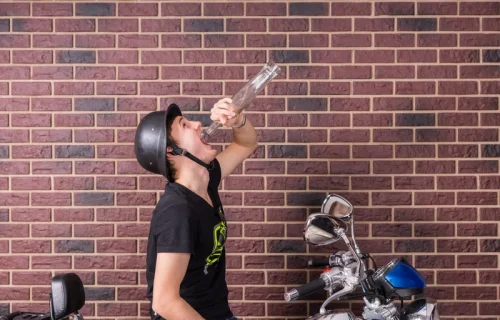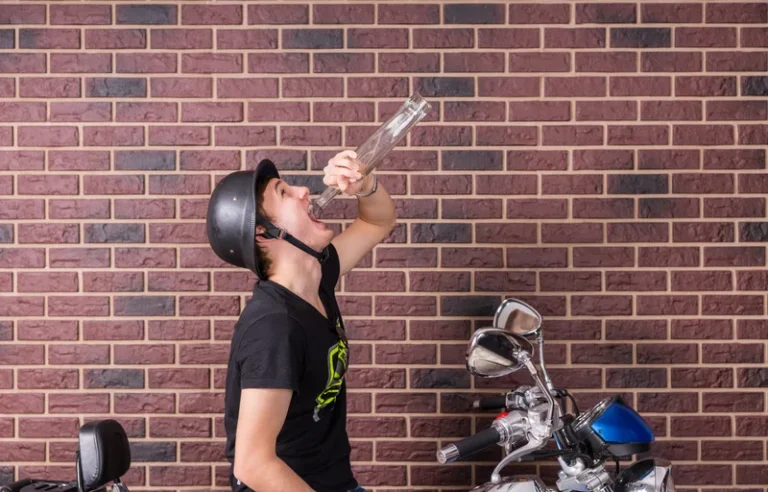
These tactics are based on a simple cognitive conceptual paradigm that says that people’s decisions to use or abuse substances depend on how well they are aware of the risks involved. School-based substance abuse prevention is a recent innovation utilized to execute changes, including social resistance skills training, normative education, and competence enhancement skills training. Median monthly overdose deaths among persons aged 10–19 years (adolescents) increased 109% from July–December 2019 to July–December 2021; deaths involving illicitly manufactured fentanyls (IMFs) increased 182%.

Teenagers are particularly vulnerable to drugs for several reasons.
- Drug abuse during adolescence can cause irreparable damage, leading to permanent cognitive impairment.
- This review article sheds light on ‘substance abuse’ amongst adolescents as an issue of public health significance, its determinants, and its implications on the health and well-being of adolescents.
- Brittany has 15 years of experience in the Mental Health and Substance Abuse field.
- Unfortunately, this has the effect of passively enabling the unhealthy behaviors.
- This increased intensity can make teenagers more susceptible to addiction.
Youth drug abuse trends may provide clues about the future public health as well as the efficacy of educational initiatives. Marijuana is often thought of as not being “as bad” as other drugs and, in some cases, even good for you. However, marijuana can be harmful to teens because their brains are still developing.

Report on the topic
Median monthly deaths increased during each 6-month period from July–December 2019 through January–June 2021 and decreased marijuana addiction during July–December 2021 but remained approximately twice as high as during July–December 2019. Find the latest science-based information about drug use, health, and the developing brain. Information provided by NIDA is not a substitute for professional medical care. One of the most challenging aspects of addiction is that it is a progressive disease.

Short-Term Side Effects of Teenage Alcohol Abuse
The CDC estimates that about 74,000 overdose deaths in 2023 were fentanyl-related. Last week, Mexican authorities seized 275,000 fentanyl pills with a street value of $6.5 million from boxes of sliced cactus bound for Arizona. As a caring adult, be aware of any shifts in friendships, associations and activities. Ask simple questions of the teens in your life (e.g., “How’s so-and-so doing these days?”) as a way to uncover any red flags in peer relationships. If a teen is vague about who they hang out with—or how they’re spending their time away from home—take that opportunity to dig a little deeper.
- Moreover, most individuals with Substance Use Disorders begin using substances when they are young 6.
- Members of my lab are interested in how hormones act in the brain to influence response to drugs of abuse.
- Severity of the disorder determines the specific type of treatment is needed.
- As they work to find their place, they can be strongly influenced by peer pressure.
How Do I Get Youth Treatment Services?
- The findings have been organized into categories to cover essential aspects like epidemiology, neurobiology, prevention, and treatment.
- Because they primarily revolve around educating students about the dangers and long-term impacts of substance abuse, previous attempts at prevention have all been ineffective.
- These are behavioral and physical signs that your child could be misusing medications, or using drugs or drinking alcohol.
- You’ll likely have many talks with your teen about drug and alcohol use.
- Learn about the different substances, signs and symptoms of addiction,…
While drug use may increase the risk of mental health disorders, it’s also important to note that these disorders can lead to substance abuse to self-medicate or numb the emotional pain. If you suspect that a teenager is experiencing either, consult a pediatrician or mental health professional as soon as possible. In 2022, over 70 million teenagers reported using some form of illegal drug. By 2023, more than 30 percent of high school seniors admitted to using drugs in the past year. The immediate dangers of substance use are well-known, but for teenagers, the risks extend beyond the immediate. The teenage brain is in a crucial stage of development, making it particularly susceptible to the potential long-term impacts of drugs.
Poems about Drug Abuse and Alcoholism

If teens begin experimenting with drugs to fit in or gain friends, they can unknowingly set themselves up for a potentially life-threatening habit; prevention is therefore critical. In 2018, 27.1% of 8th to 12th graders used an illicit drug; in the same year, 29.3% used illicit drugs and suffered a depressive episode. 18.7% of 8th to 12th graders drank alcohol in the last month of 2018, with 12% binge drinking. Lotus Behavioral Health helps teens recovering from substance abuse and co-occurring mental health disorders break the cycle of addiction and develop healthy habits to support their long-term recovery. Our residential, PHP, and IOP treatment programs take a family-first approach to help teens build a sustainable lifestyle that encourages sobriety & success. Sometimes drug abuse can drug abuse in teens be mistaken for other mental health conditions or even physical health problems.
Ten facts about teen alcohol and drug abuse
Teenagers in New Mexico are 37.04% more likely to have used drugs in the last month than the average American teen. Teenagers in New Jersey are 7.49% less likely to have used drugs in the last month than the average American teen. Teenagers in New Hampshire are 27.56% more likely to have used drugs in the last month than the average American teen. Teenagers in Nevada are 22.98% more likely to have used drugs in the last month than the average American teen. Teenagers in Nebraska are 1.89% less likely to have used drugs in the last month than the average American teen.


